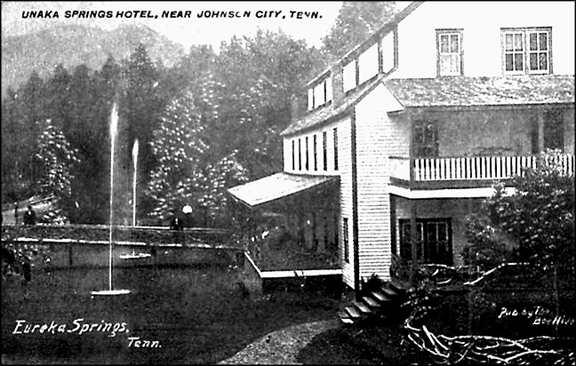In early December last year, I wrote a column paraphrasing a hodgepodge of news bits taken from a variety of newspapers spanning 1890 to 1928. Today’s column follows that same vein with news from the years 1924 through 1947.
I keep a running log of smaller news items that I plan to run from time to time. I find them interesting and hope you do too.

Sep. 1924: Forest rangers battled to save the town of Erwin from destruction by forest fires, which had been raging on Unaka Mountain for several days. At the same time, residents and numerous vacationers fought a series of new fires that were threatening the popular Unaka Springs Hotel and the village of Marbleton.
Feb. 1938: A bus-automobile trailer collision took the lives of two members, Roy Roberts and James Grissom, of the undefeated Carson-Newman College basketball team. More than 20 other students were in the bus en route to Johnson City, but fortunately escaped injury.
Jul. 1940: For the first time in East Tennessee, a presentation billed as “Opera Under the Stars” presented “Carmen” at Roosevelt Stadium in Johnson City. The production was conducted by A.F. Thaviu and featured such famous stars as Mario Selveira, who played the part of Escamillo; Harriet Bruer as Carmen; and Henry Thompson as Don Jose. It was described as “enjoyable entertainment and excellent music to the people of this region.” Tickets were secured in Johnson City from members of the Wednesday Morning Music Club and at Snyder-Jones Pharmacy. They were also available in Elizabethton, Erwin, Greeneville, Bristol and Kingsport. The opera came to Johnson City under the auspices of the Wednesday Morning Music Club and the Johnson City Press-Chronicle.
Jul. 1940: The Civitan Club placed automobile tags on sale bearing the appropriate slogan, “Johnson City – Where History and Scenery Meet.” The plates served several purposes by promoting tourism, trade and industry for the city; generating revenue for playgrounds in needed areas; and accumulating funds for a Boy Scout troop for underprivileged youths. The tags displayed black lettering on orange background.
Jul. 1940: The Johnson City-Press Chronicle once had a Sunday feature called, “The Public Library” that provided a review of three current books on its shelves. On this day, the offerings were Charles’ Gift by Hubert Footner (story of a 1650 dwelling on Chesapeake Bay), “The Last Tragedian by Otis Skinner (early days of the American theatre) and The Making of a Minister’s Wife” by Anna Johnson (living a challenging lifestyle).
Feb. 1947: New York Congressman Irving Ives came to Johnson City to address the East Tennessee Lincoln Day dinner. The republican’s views mirror the debate in Washington today: “Congress must bring our national budget actually and definitely into balance to save the nation from economic disaster. Non-essential governmental spending should be cut to the bone and only that which can be fully justified should be allowed. Then by all means, we should adopt a tax reduction. Tax reduction must of necessity come last to bring our economy into proper adjustment.”
Feb. 1947: While Johnson Citians were basking in the warmth of an unusually mild winter, two local boys were enduring the bitter cold as part of Rear Admiral Richard E. Byrd’s noted Antarctic expedition. Frank Roupas (19-year-old former graduate of Science Hill High School) and Jack Shipley (17-year-old attendee of ETSC Training School) were serving in the Navy on the carrier ship “Philippine Sea” as part of “Operation Highjump.”
If you have any news tidbits from yesteryear to share, I would love to receive them for future articles.

Comments are closed.